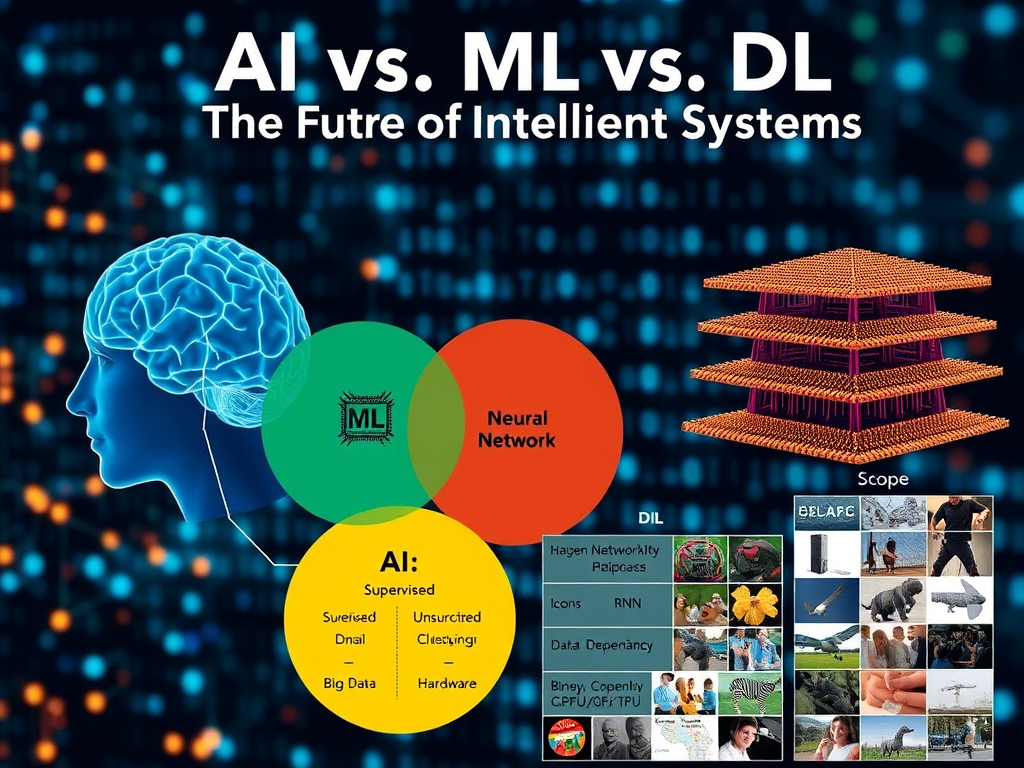Introduction
Artificial Intelligence (AI), Machine Learning (ML), and Deep Learning (DL) are revolutionizing industries, from healthcare to finance. While these terms are often used interchangeably, they represent distinct concepts. This guide breaks down their definitions, relationships, and real-world applications.
What is Artificial Intelligence?
Deep learning is going to be able to do everything.
Artificial Intelligence (AI) refers to machines designed to mimic human intelligence, performing tasks like problem-solving, decision-making, and language understanding. AI can be:
- Rule-Based: Follows predefined instructions (e.g., chatbots).
- Learning-Based: Adapts through data (e.g., recommendation systems).
Examples include Siri, self-driving cars, and chess-playing algorithms like IBM's Deep Blue.
Machine Learning: The Engine of Modern AI
Machine Learning (ML) is a subset of AI that focuses on training models to learn patterns from data. Instead of explicit programming, ML algorithms improve with experience.
Types of Machine Learning:
- Supervised Learning: Uses labeled data (e.g., spam detection).
- Unsupervised Learning: Finds hidden patterns in unlabeled data (e.g., customer segmentation).
- Reinforcement Learning: Learns via trial and error (e.g., game-playing AI like AlphaGo).
Artificial intelligence will reach human levels by around 2029. Follow that out further to, say, 2045, we will have multiplied the intelligence, the human biological machine intelligence of our civilization a billion-fold.
Deep Learning: The Cutting Edge of ML
Deep Learning (DL) is a specialized branch of ML that uses neural networks with multiple layers (hence 'deep'). These networks mimic the human brain’s structure, enabling them to solve complex tasks like image and speech recognition.
Key Components of Deep Learning:
- Neural Networks: Layers of interconnected nodes (neurons).
- Convolutional Neural Networks (CNNs): Ideal for image processing.
- Recurrent Neural Networks (RNNs): Handle sequential data (e.g., text, time-series).
Applications include facial recognition, language translation, and autonomous vehicles.
AI vs. ML vs. DL: Key Differences
| Aspect |
Artificial Intelligence |
Machine Learning |
Deep Learning |
| Scope |
Broadest (includes all AI techniques) |
Subset of AI focused on data-driven learning |
Subset of ML using neural networks |
| Data Dependency |
Can work with rules or data |
Requires structured data |
Thrives on large, unstructured data |
| Hardware Needs |
Varies (low to high) |
Moderate (GPUs for training) |
High (GPUs/TPUs for deep networks) |
Real-World Applications
- Healthcare: AI-driven diagnostics (e.g., detecting tumors in X-rays).
- Finance: Fraud detection and algorithmic trading.
- Retail: Personalized recommendations (e.g., Netflix, Amazon).
- Autonomous Systems: Self-driving cars and drones.
Challenges and Future Trends
While AI/ML/DL offer immense potential, challenges like data privacy, algorithmic bias, and computational costs persist. Future trends include:
- Explainable AI (XAI): Making models more transparent.
- Quantum Computing: Accelerating complex computations.
- AutoML: Automating model development for non-experts.
Conclusion
AI, ML, and DL are interconnected yet distinct fields driving technological innovation. Understanding their nuances helps businesses and individuals harness their power responsibly. As these technologies evolve, staying informed is key to leveraging their benefits while addressing ethical and practical challenges.
References
- Goodfellow, I., Bengio, Y., & Courville, A. (2016). Deep Learning. MIT Press.
- Alpaydin, E. (2020). Machine Learning: The New AI. MIT Press.
- Ng, A. (2021). Machine Learning Yearning. Deep Learning AI.
